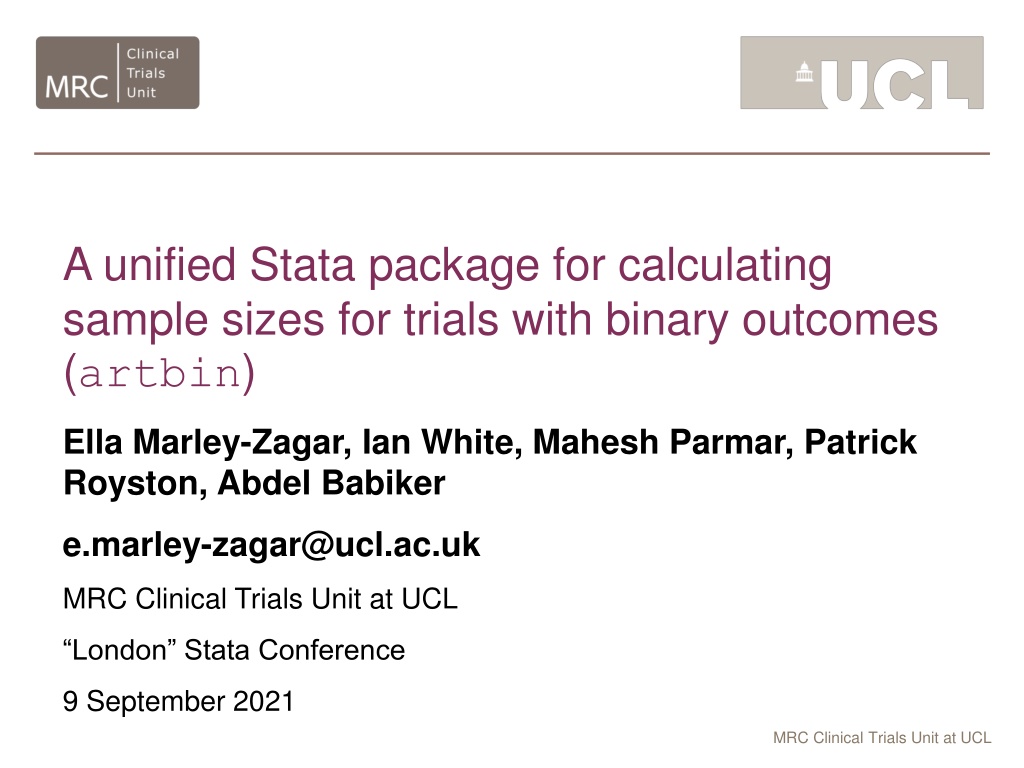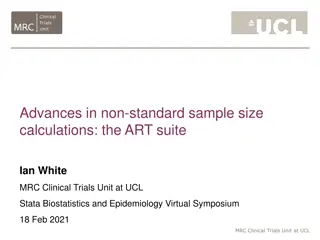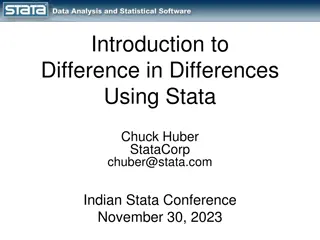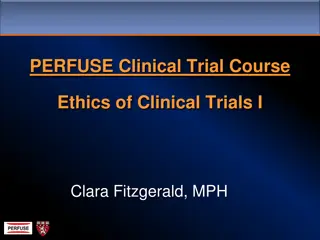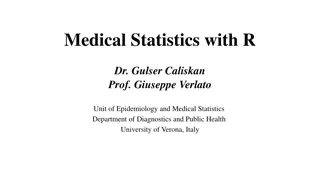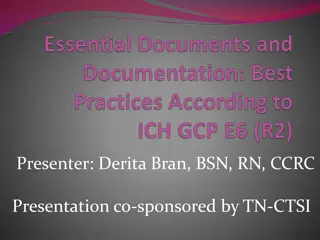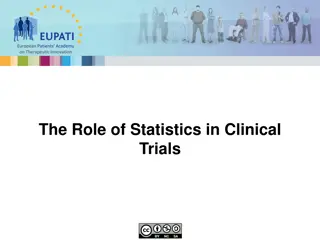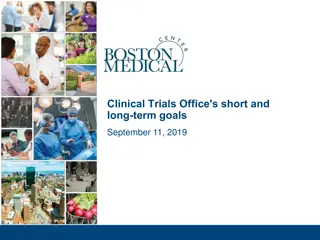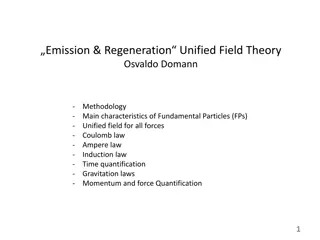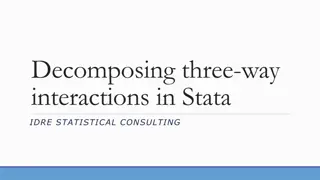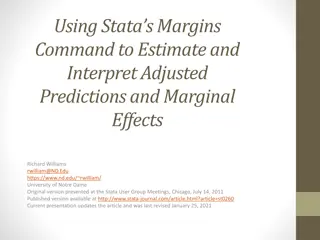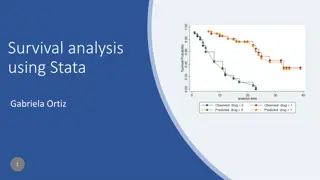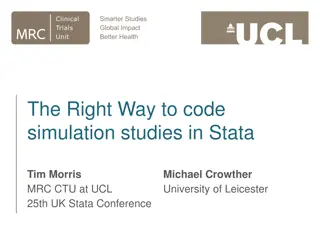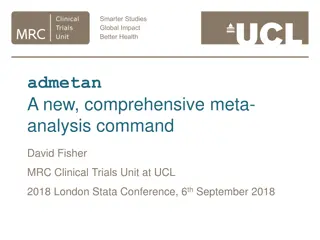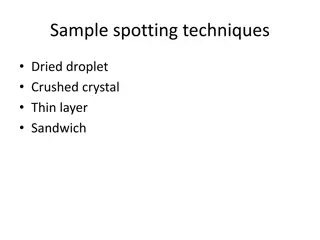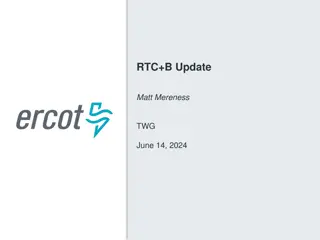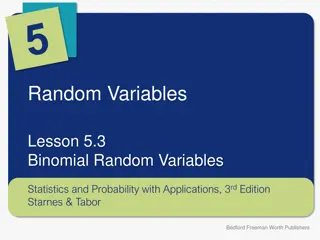Unified Stata Package for Sample Size Calculations in Clinical Trials
A comprehensive overview of artbin, a Stata package for determining sample sizes in trials with binary outcomes. This tool is essential for designing effective clinical trials across various disciplines and has recently undergone significant enhancements. Unlike other software, artbin offers a wide range of statistical tests and options for analyzing binary outcomes in different trial types. Explore the features and benefits of artbin in this detailed presentation.
Download Presentation

Please find below an Image/Link to download the presentation.
The content on the website is provided AS IS for your information and personal use only. It may not be sold, licensed, or shared on other websites without obtaining consent from the author. Download presentation by click this link. If you encounter any issues during the download, it is possible that the publisher has removed the file from their server.
E N D
Presentation Transcript
A unified Stata package for calculating sample sizes for trials with binary outcomes (artbin) Ella Marley-Zagar, Ian White, Mahesh Parmar, Patrick Royston, Abdel Babiker e.marley-zagar@ucl.ac.uk MRC Clinical Trials Unit at UCL London Stata Conference 9 September 2021 MRC Clinical Trials Unit at UCL
What is artbin and why do we need it? In medicine, when designing clinical trials to test a new treatment or intervention, need to know how many patients to recruit to the trial i.e. sample size. Need a tool to calculate this. If the outcome is binary e.g. alive/dead, improved/not improved artbin Possible applications to other areas e.g. assessing education interventions, international development, economics, criminology . Original artbin version available on SSC since 2004 but recently undergone a major upgrade with lots of new features added. Why artbin? Other software available e.g. Stata s power but the new artbin has more stats tests and options available. 2 MRC Clinical Trials Unit at UCL
Plan of talk The new artbin program described here is available at https://github.com/emarleyzagar/artbin 1. 2. 3. 4. 5. 6. 7. Current sample size calculators in Stata Types of trial artbin command Example in STREAM study What s new Software testing Discussion 3 MRC Clinical Trials Unit at UCL
Current sample size in Stata Official power (v13). ART suite: sample size calculations for complex time-to-event trials (artsurv) Includes Ian White s artcat for ordinal outcomes (on SSC, presented last year) also includes binary outcome (artbin, previous version 1.1.2) User written: ssi (Philip Jones), niss (unreleased, Patrick Phillips). 4 MRC Clinical Trials Unit at UCL
Sample size in Stata cont. However, none allow variety of statistical tests available in artbin such as: Trend across K groups Wald test Conditional test Calculations under local or distant alternatives In addition, the new artbin does not require the expected proportions to be the same in the two groups for non- inferiority/substantial-superiority trials, unlike any other software packages currently available in Stata. 5 MRC Clinical Trials Unit at UCL
Types of trial 1. Superiority 2. Non-inferiority / Substantial-superiority 6 MRC Clinical Trials Unit at UCL
Superiority Most common type of trial. Trials comparing treatment A with treatment B (2-arm). Used to show that one treatment is better than another. For >2-arms, trials comparing A, B, C, D etc to test if there is any differenceamong the groups. When are superiority trials appropriate? In comparisons with placebo (or no treatment). When adding more treatment. When using more toxic treatment. When using more expensive treatment. 7 MRC Clinical Trials Unit at UCL
Superiority trial diagram SUPERIORITY CI wholly above 0 NOT SHOWN TO BE SUPERIOR CI goes below / is entirely below 0 Intervention may be / is worse 0 Control better Intervention better 8 MRC Clinical Trials Unit at UCL
Non-inferiority trials 2-arm trial, treatments A and B. Used to demonstrate that a treatment is no worse than an existing treatment, by a pre-specified amount m (margin). Used when the experimental treatment is not expected to be superior, but has other benefits. Margin is amount of efficacy it s acceptable to lose, given other benefits of treatment. When are non-inferiority trials appropriate? Cheaper treatment. Less treatment. Less toxic treatment. Easier to administer treatment. For example: Primary care treatments by a nurse practitioner vs doctor, less wait time 9 MRC Clinical Trials Unit at UCL
Non-inferiority trial diagram margin NON-INFERIOR CI wholly above margin NOT SHOWN TO BE NON- INFERIOR CI goes below margin Intervention may be / is worse by more than pre-specified amount 0 Control better Intervention better 10 MRC Clinical Trials Unit at UCL
Substantial-superiority trial diagram margin SUBSTANTIAL-SUPERIORITY CI wholly above margin NOT SUBSTANTIAL-SUPERIORITY CI goes below margin Intervention may not be / is not better by more than pre-specified amount SUPERIORITY, BUT NOT SUBSTANTIAL-SUPERIORITY 0 Control better Intervention better 11 MRC Clinical Trials Unit at UCL
artbin outline of syntax Immediate command, like artsurv, artcat, power For a 2 arm trial, user specifies: 1. The anticipated probabilities in the control arm (p1) and experimental arm (p2) as pr(p1 p2) 2. Option to specify a margin for a non-inferiority or substantial- superiority trial as margin(m) 3. Either power() or n() 4. Various options e.g. allocation ratio aratio(1 2), wald (default score), condit, local, ccorrect. 12 MRC Clinical Trials Unit at UCL
artbin outline of syntax cont. For a 3+ arm trial, user specifies: 1. The anticipated outcome probabilities in the control arm (p1) and experimental arms (p2 p3 p4 etc) as pr(p1 p2 p3 p4) No margin option as for 2-arm trials only Either power() or n() Various options as 2-arm trial e.g. allocation ratio aratio(1 2 3 4), wald, condit, local. Option to specify a trend test, trend. 2. 3. 4. 5. 13 MRC Clinical Trials Unit at UCL
STREAM example: Non-inferiority We reproduce the sample size calculation for the STREAM trial (Nunn et al., 2019) undertaken at MRC CTU UCL. The need for the STREAM trial arose from the increase of multi- drug resistant strains of Tuberculosis, especially in countries without robust health care systems unable to administer and follow up treatment over long periods of time. The STREAM trial evaluated a shorter more intensive treatment regimen for multi-drug resistant Tuberculosis compared to the lengthier treatment recommended by the World Health Organisation. The trial used an expected 0.7 probability on control and 0.75 on treatment with a pre-specified non-inferiority margin of 0.1, with twice as many patients in treatment compared to control. artbin, pr(0.7 0.75) margin(-0.1) power(0.8) ar(1 2) wald 14 MRC Clinical Trials Unit at UCL
Answer 15 MRC Clinical Trials Unit at UCL
STREAM cont. Assumed 20% of patients were not accessible in primary analysis (318 / 0.8) = 398 398 16 MRC Clinical Trials Unit at UCL
Whats new Added new options and statistical tests as previously mentioned Old artbin syntax for non-inferiority trial: artbin, pr(.2 .3) ni(1) distant(1) Now: artbin, pr(.2 .2) margin(.1) 17 MRC Clinical Trials Unit at UCL
Whats new cont. New dialogue box e.g. for STREAM trial 18 MRC Clinical Trials Unit at UCL
Software testing artbin may be used to design randomised trials testing new medical treatments so have tested it extensively We have a program of testing our unit s software 1. We compared results from artbin with those given by: Pocock (2003) Julious and Owen (2011) Blackwelder (1982) Pocock (1983) Online calculator Sealed Envelope (2012) User written Stata programs ssi, niss Exact agreement was achieved. 19 MRC Clinical Trials Unit at UCL
Software testing cont. 2. The output of artbin was compared to Cytel's software EAST which is a sophisticated package able to produce sample size and power calculations for a range of binary outcomes in clinical trial settings. We achieved perfect agreement taking into account differences in rounding. We tested every permutation of 2-arm/more than 2-arms and non-inferiority/substantial-superiority/superiority trials with margin, local/distant, conditional/unconditional, trend and Wald test options to check that the results were as expected, and that sample size was increased/decreased accordingly. We checked error messages in a number of impossible cases, to ensure that we obtained error messages as required. We tested the new dialogue box menu options to verify that the results were as required. 3. 4. 5. 20 MRC Clinical Trials Unit at UCL
And of coursepower. 21 MRC Clinical Trials Unit at UCL
Discussion User-friendly software for calculating sample size for trials with binary outcomes. Validated against numerous other software and published sample sizes. artbin has been created to assist the design of clinical trials, but it can also be used in the design of observational studies to explore a protective or harmful factor. Paper is to be submitted to the SJ soon New artbin to be released to SSC soon 22 MRC Clinical Trials Unit at UCL
Thank you for listening References Barthel, F. M. S., P. Royston, and A. Babiker. 2005. A menu-driven facility for complex sample size calculation in randomized controlled trials with a survival or a binary outcome: Update. Stata Journal 5(1): 123-129. Blackwelder, W. C. 1982. Proving the null hypothesis" in clinical trials. Controlled Clinical Trials 3(4): 345-353. Julious, S. A., and R. J. Owen. 2011. A comparison of methods for sample size estimation for non-inferiority studies with binary outcomes. Statistical Methods in Medical Research 20(6): 595-612. Nunn A.J., P.P.J. Phillips, S.K. Meredith, C.Y. Chiang, F. Conradie, D. Dalai, A. van Deun, P.T. Dat, N. Lan, I. Master, et al. A trial of a shorter regimen for rifampin-resistant tuberculosis. N Engl J Med. 2019;380(13):1201 13. Pocock, S. J. 1983. Clinical Trials: a Practical Approach. Chichester: Wiley. Pocock, S. 2003. The pros and cons of noninferiority trials. Fundamental and Clinical Pharmacology 17(4): 483-90. Royston, P., and F. Barthel. 2010. Projection of power and events in clinical trials with a time-to-event outcome. Stata Journal 10(3): 386-394. Sealed Envelope. 2012. Power calculator for binary outcome non-inferiority trial. [Online] Available from: https://www.sealedenvelope.com/power/binary-noninferior/. 23 MRC Clinical Trials Unit at UCL
